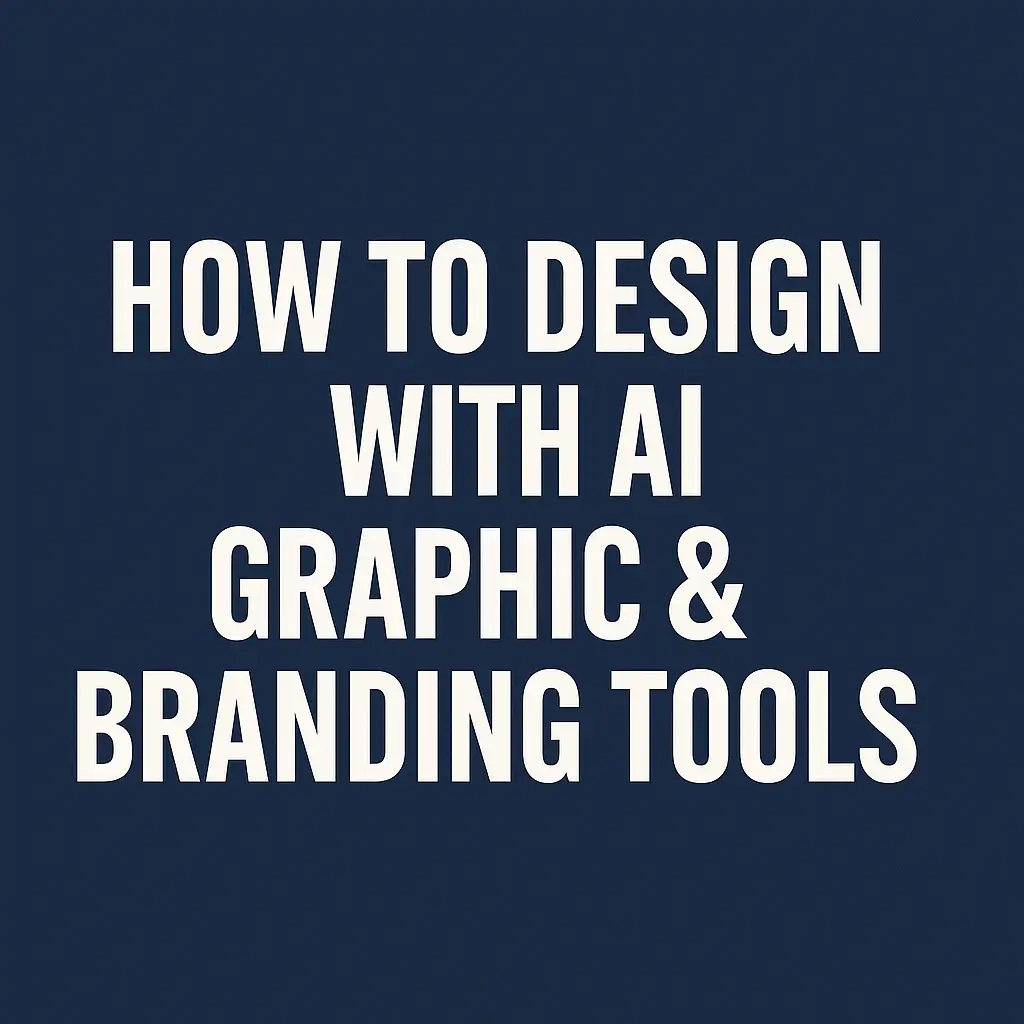In today’s fast-paced digital world, branding and visual content are no longer limited to professional designers. Thanks to AI-powered tools, entrepreneurs, creators, and marketers can now build stunning designs, logos, and brand kits—all without advanced design skills. Whether you’re creating social media graphics, developing a logo, or designing a complete brand identity, AI graphic design tools are changing the game. Here’s a full guide on how to get started, choose the right tools, and master AI-assisted branding from scratch.
Create Professional Logos with AI Branding Tools
Your logo is often the first visual element people notice about your brand. It represents your business identity, and it needs to be both memorable and visually aligned with your brand values. Fortunately, AI-based logo creators like Looka, Brandmark, and Canva’s Logo Maker can now generate stunning logo options in seconds.
How It Works:
Most AI logo generators follow a simple process:
- Input Your Brand Name
- Select Industry or Business Type
- Choose Preferred Styles or Colors
- AI Suggests Dozens of Logo Concepts
- Customize and Download
For example, Looka asks for your industry, style preferences (modern, elegant, minimalist), and then lets you preview how your logo appears on business cards, websites, and merchandise.
Best Practices:
- Always opt for vector formats (SVG, EPS) so your logo stays sharp at any size.
- Test your logo in black-and-white and colored formats.
- Use your final logo across all platforms: website, social media, packaging, etc.
2. Design Social Media Graphics Using AI Tools
Social media is visual-first. AI tools like Canva, Adobe Firefly, and Crello (now VistaCreate) help create optimized social posts, stories, and banners with built-in brand alignment.
Getting Started:
- Use Canva’s “Magic Design” feature or Firefly’s Text-to-Image generator.
- Choose a platform-specific size (e.g., Instagram post, YouTube thumbnail).
- Insert your brand fonts, colors, and logo.
- Let the AI suggest layout, design elements, and image styles.
- Edit manually or regenerate.
Time-Saving Features:
- Auto-align and resize across platforms.
- Instant background removal using AI.
- Animated graphics generation with text transitions and overlays.
Pro Tips:
- Stick to 1–2 font styles for consistency.
- Use templates as a base but customize for originality.
- Create a brand folder in Canva to keep assets organized.
3. Build a Complete Brand Kit with AI Assistance
A brand kit is a collection of visual guidelines and assets—logo, typography, color palette, icons, and more—that keep your brand consistent.
AI tools like Looka, Canva Pro, or Tailor Brands offer full brand kits generated instantly based on your preferences.
How to Build Your Brand Kit with AI:
- Upload or generate your logo.
- Choose brand color schemes (AI tools suggest palettes based on emotion or industry).
- Pick primary and secondary fonts.
- Use AI to auto-generate social icons, email signatures, brand mockups, and website headers.
Benefits:
- Maintains visual consistency across your digital presence.
- Easy to share with teams or collaborators.
- Instant access to assets for new campaigns or content pushes.
Tip: Always export your kit in high-quality formats and store it in cloud folders for easy access.
4. Use AI to Design Website Themes and Page Layouts
Your website is your digital headquarters. Tools like Wix ADI, Framer AI, and Uizard allow you to design professional-looking, mobile-optimized sites—powered by artificial intelligence.
How These Tools Work:
- Wix ADI (Artificial Design Intelligence): Asks a few questions about your business, generates a complete homepage with branding elements.
- Uizard: Converts sketches or ideas into functioning UI/UX wireframes.
- Framer AI: Uses plain-text prompts to design page sections, complete with CTAs, image blocks, and content.
Why Use AI for Web Design:
- No coding required.
- Real-time editing and testing.
- Automatically mobile responsive.
- Easy integrations with email, analytics, and social media tools.
Ensure you still review SEO elements manually—meta tags, ALT texts, and loading speeds often need human tweaking.
5. Avoiding Legal Risks: Drawbacks of AI in Branding
While AI tools offer ease and speed, they also come with limitations—especially regarding originality and copyright concerns.
Key Drawbacks:
- Lack of Uniqueness: AI-generated logos or templates may resemble others if not customized.
- Copyright Grey Zones: Some image-generation tools use databases that may have usage limitations.
- Overdependence: Relying solely on AI can lead to generic or off-brand visuals.
Best Practices to Stay Legal and Original:
- Always customize AI-generated designs to stand out.
- Read licensing terms before using assets commercially.
- Avoid using AI tools for plagiarizing existing brands or logos.
If you’re in a competitive niche or creating a trademarked logo, consider hiring a designer to refine or verify your AI concepts.
Final Thoughts: AI + Human Creativity = Branding Superpower
AI design and branding tools offer a powerful edge—but only when paired with strategic thinking and human creativity. Whether you’re a startup founder, solo creator, or digital marketer, these tools can accelerate your process, improve visual quality, and help you launch professionally—without hiring a full-time design team.
As with any tool, the real magic lies in how you use it. Customize designs, stay on-brand, and always think about your audience. With the right mix of AI and your creative vision, you can design bold, memorable branding that elevates your entire digital presence.
Tools Mentioned:
- Canva (https://www.canva.com/)
- Looka (https://looka.com/)
- Tailor Brands (https://www.tailorbrands.com/)
- Wix ADI (https://www.wix.com/adi)
- Framer AI (https://www.framer.com/)
- Adobe Firefly (https://firefly.adobe.com/)
- Uizard (https://uizard.io/)

